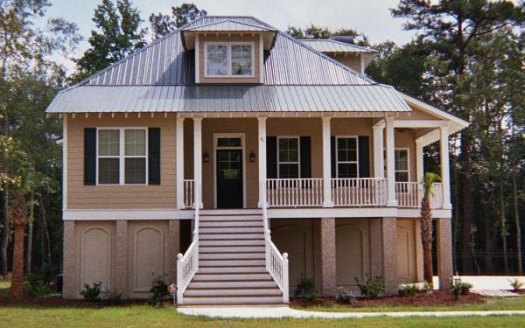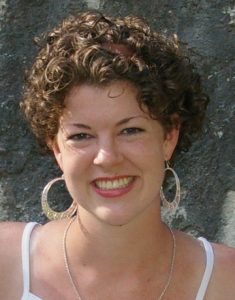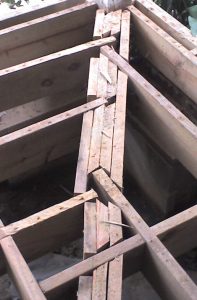27 Aug August 2009
Willis Sinclair Homes
“The Lowcountry’s Premier Custom Home Builder”

Personalized Full-Service Construction
Fixed Price and Cost Plus Contracts
|
Coming soon from Willis Sinclair Homes Two new books dealing with home building quality issues. Read details inside! |
24 Gabriel Road
Lodge, South Carolina 29082
843 846 2500

August 2009
Who is Mandy Burdick? 
Mandy Burdick is the marketing and estimating assistant for Willis Sinclair Homes. She also helps out on our jobs from time to time doing punch out, cleaning and other finishing details.
Mandy is another of Bill Burdick’s daughters and enjoys helping as his assistant in his many company tasks. She is our “digital graphic artist” and is the person who brought our new logo to life. In addition to this she maintains our mailing list and oversees newsletter publishing and mailing.
Mandy helps with estimating and bid preparation by doing plan takeoffs and creating material and finishing schedules. She performs the takeoff and calculations and then tabulates them for pricing and inclusion in our job proposals.
Miss Burdick is a home school graduate which, as one of Bill’s students, means she now has the equivalent of a college education. In addition to her normal courses (physics, algebra, calculus, chemistry, etc.) she also became quite proficient as a pianist.
Utilizing her graphics skills, Mandy is currently creating original artwork for a series of books Bill is writing for his grandchildren.
In her ‘spare’ time Mandy enjoys hand crafting uniquely designed jewelry such as earrings, bracelets and necklaces. All of her creations are for sale and will soon be featured at www.geniesboutique.com.
Willis Sinclair Homes
(843) 846-2500
 From the desk
From the desk
of Bill Burdick …
One of the many things we are working on with our new company is a Quality Plan. Obviously, every builder claims to be a ‘quality’ builder, but what does that mean?
In an earlier career as a design engineer, I designed, among other things, flight navigators for the aviation market. Quality was important to us for very obvious reasons.
Later, I designed television sets and quality became even more important. You might wonder how that can be. It is simple when you think about it. With a flight navigator, you always have at least one and usually several full time pilots monitoring things. If there is a failure, they can do navigation by other means.
Our television factory turned out millions of televisions each year. During the peak times in the mid 80s, we were building a color television every 20 seconds in eastern Tennessee.
With an annual run of say, 4,000,000 televisions, a failure rate on the assembly line of just 1% means you have 40,000 televisions to fix. That would have been a disaster. We had a target of 0.01% (1 out of 10,000) and usually hit it.
Measuring the quality of fall off on an assembly line is easy, but how about home building? We will explore several issues in this newsletter in our quest to define our quality.
As always, we solicit your input. We want to make these newsletters useful and interesting.
Bill Burdick
Vice President
Quality
Quality. Builders claim they have it. Homeowners want it. Yet, somehow many homes lack it. They are not well built. How can that be? They all passed inspections!
Don’t building inspectors make sure a home is quality built? The simple answer is, “No.” They do their best to make sure a house is structurally sound and safe to occupy.
A structurally adequate house can still have a lot of problems. Ask your friends.

This porch framing passed inspection!
The inspectors are only allotted a small amount of time to ‘inspect’ the house. Houses can be very complex. It is also difficult to see everything that needs to be inspected. Some builders even craftily hide their problems from inspectors.
Inspections are critical, but don’t count on them to give you a quality home.
One problem that arises quickly in the discussion of quality home construction is “How do you define quality?” ISO-9000, an industrial quality standard, defines quality as “built to print” (i.e. made like the drawings show). For factories, that is fine because the prints are sufficient to build a widget.
That definition will not work for houses for several reasons. First, most house plans do not show all details. Framing, plumbing, HVAC, electrical and other details are usually omitted from architectural plans (or simplified). House plans that show all of the details would be so big they would be difficult to follow. They would also be very expensive.
Another problem with plans is often they have conflicting information on them. In the interest of expedience (to keep costs down), architects sometimes ‘cut and paste’ either from similar plans or from the same plan. That does not always work, because sometimes details are not the same in each location.
Reputable architects are always happy to correct or clarify their plans, but it is possible for a builder to not catch problems until late in the process. Since the cost to change it then is high, the mistake often is ignored or hidden.
Of course, all builders claim their work is done to ‘generally accepted standards’ (whatever those are) or is of ‘good workmanship’ (whatever that is). We need something more than vague phrases.
The National Association of Home Builders has a quality program for builders, but it has not caught on very well.
According to the NAHB site, there is one builder in South Carolina and about 26 builders in the United States who have the NHQ (National Housing Quality) certificate. Twelve of those 26 are different locations of KB Homes.
The process by NAHB appears to be expensive and time consuming (an estimated 112 hours of consulting fees plus the audit). That does not include the time and effort a home building company must invest.
There are two options for builders to take with quality issues. The first and most common is to ignore quality issues, ‘bad mouth’ standards and claim everything you do is ‘quality.’ Many builders will take this path.
We have even heard a builder say he has just thrown plans in the dumpster and built the house his way. Obviously, he does not say that to the home owner or architect.
The second thing is to develop a quality program that is real and works. Certainly, the NHQ program could be made to work, but it is our concern that perhaps a plan that works for a huge builder will not work well for a small builder.
It is true, it takes time and effort to develop a quality program, but in the end, everyone wins.
The home owner wins because he has a very well built home with very few defects and significant documentation of the process. The builder wins because rework costs are down and home owners are happy. Subcontractors win because they have less call backs and rework. The overall building standards go up because builders have to compete.
Of course, such a project is no simple task. Here at Willis Sinclair Homes we intend to begin this process in the next few weeks. In the end, we will develop two quality documents.
The first document will be our official quality program. It will detail how we make sure our clients have very high quality homes. We will provide our clients with a copy of our standard as soon as it is available.
If you are a past client and want a copy, let us know. We would be happy to provide you with one.
We will even make it available to others in the interest of improving the building standards here in the South Carolina Lowcountry. We want everyone to win.
The second document we are going to develop is a quality booklet especially for home owners. This booklet will inform home owners of specific things to look for as their house is being built.
Photos showing proper and improper techniques will be presented with descriptions about the problems and risks.
The booklet will be divided into sections for each major task. With this aid, home owners will be able to spot quality construction techniques as well as inferior ones when he visits his job site.
As with our quality manual, we will provide a copy of our quality booklet free of charge to our clients. They are always welcome to visit our job sites and inspect their own future homes.
For others, copies of our quality manual and booklet will be available for purchase at a reasonable cost. If you are building or planning to build, you will need this book. It will help you understand what “good building quality” should be.
Willis Sinclair Homes, where ‘good enough’ is not good enough.

Call 843 846 2500





No Comments